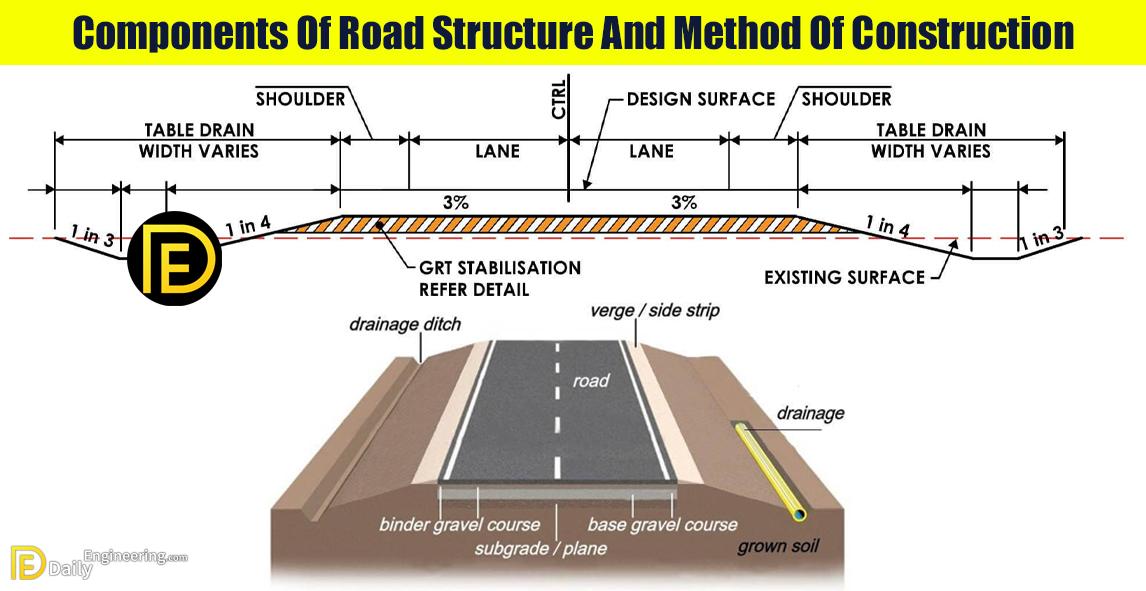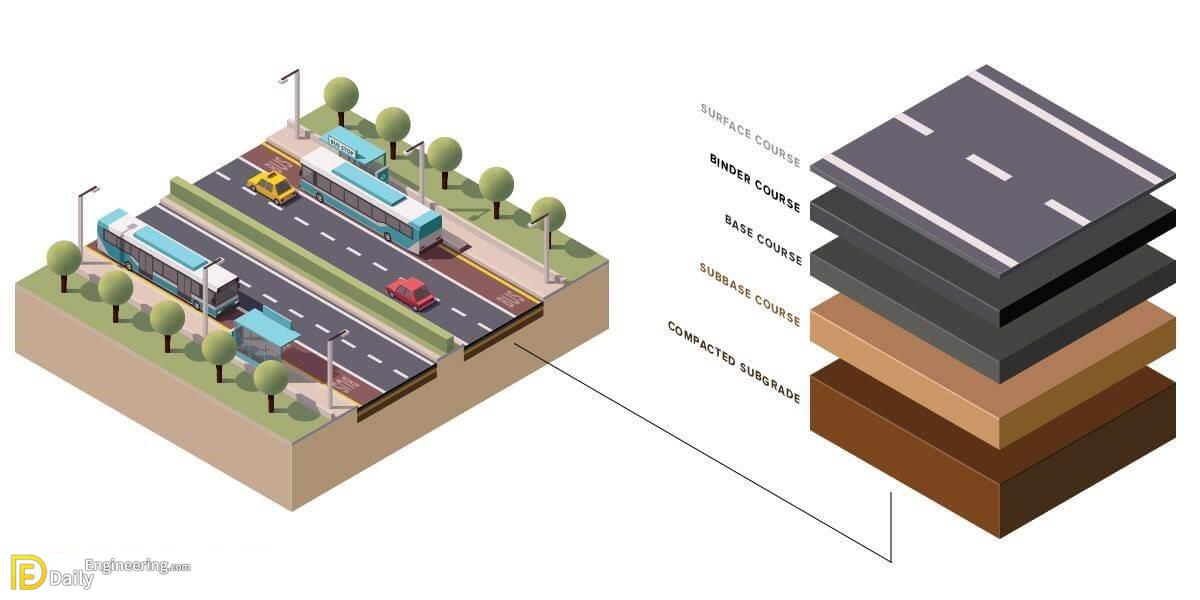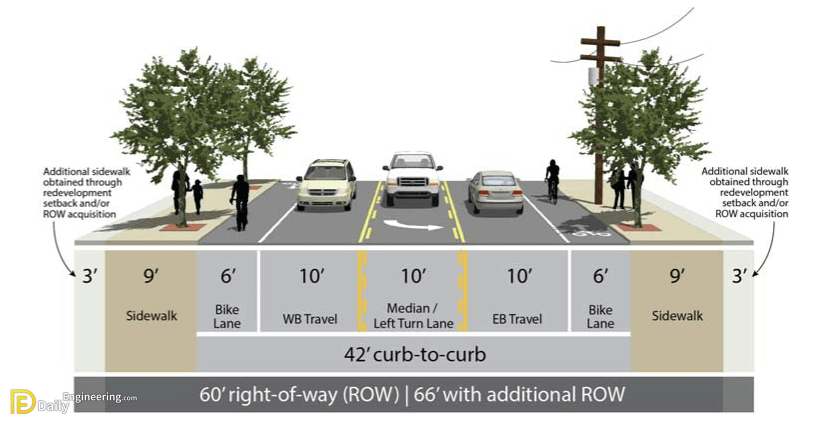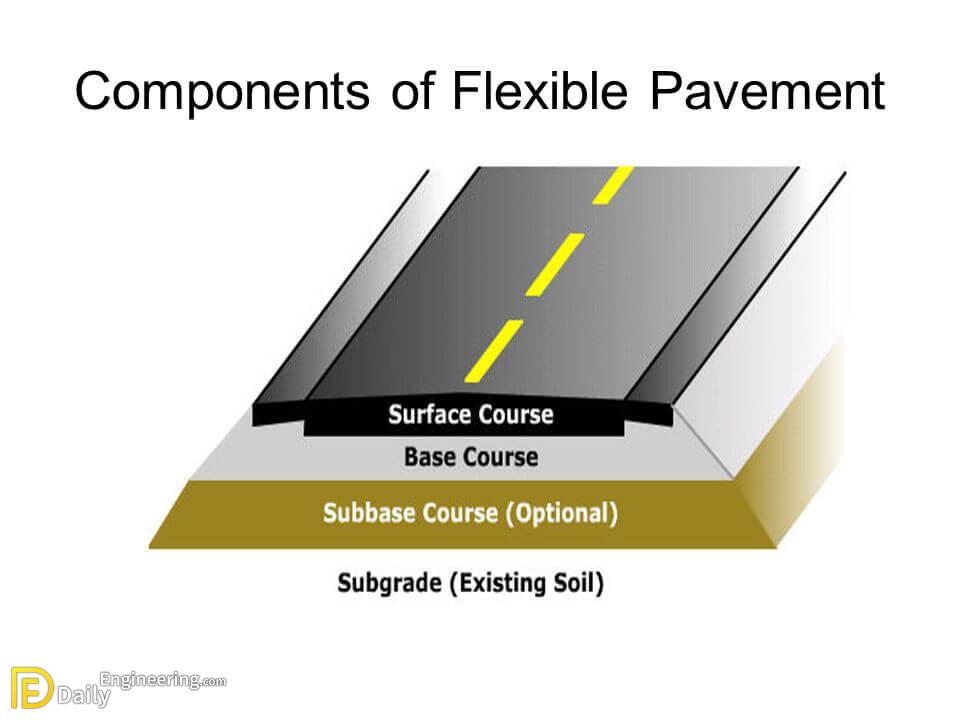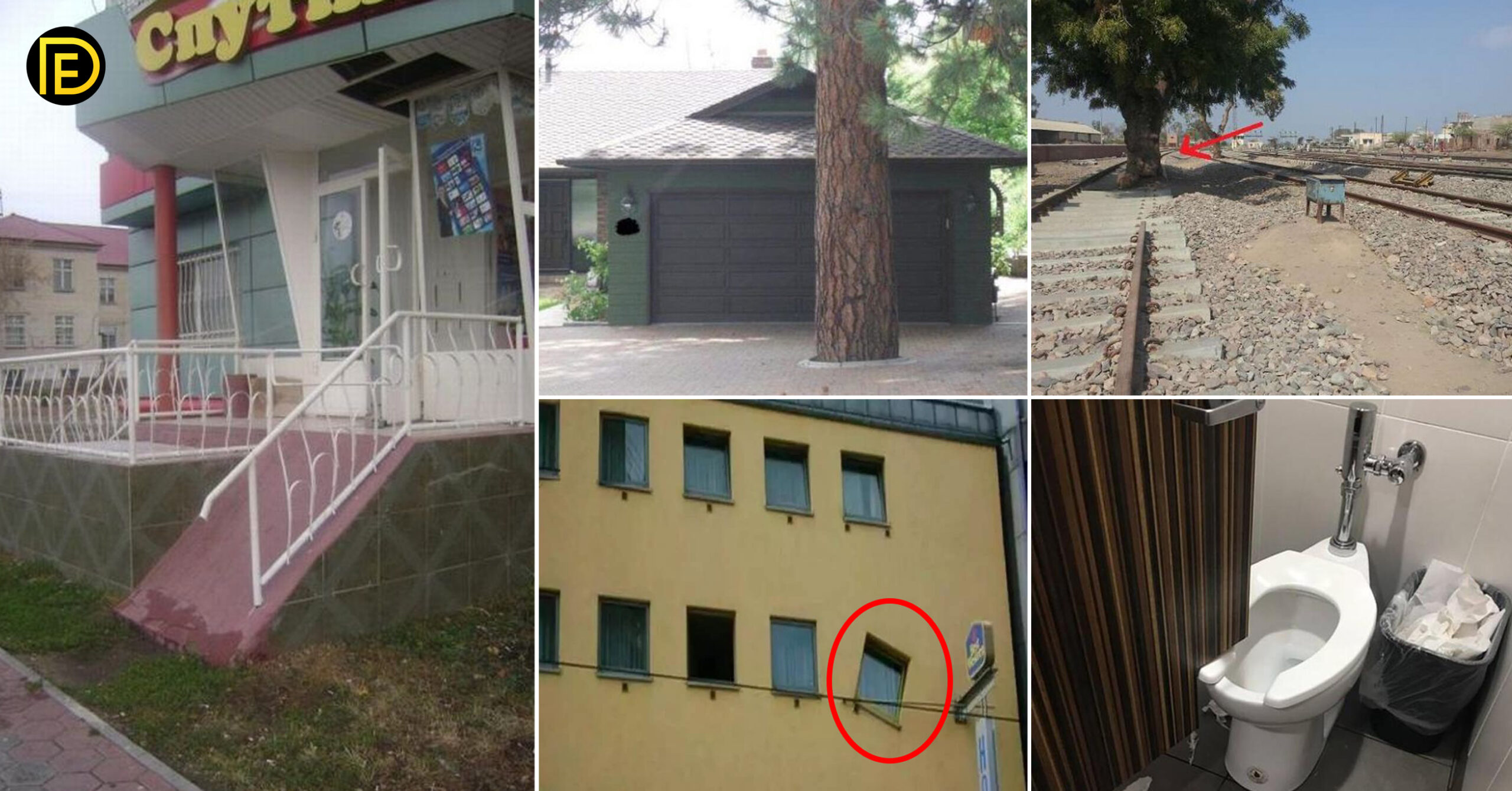1- Sub-grade
The finished and compacted surface of earthwork on which a road pavement rests is called subgrade or formation. The subgrade of a road may be provided on an embankment, in cutting or existing ground level depending upon the topography and the finalized formation level. It consists of well compacted natural soil brought to the required camber and gradient. The thickness and type of pavement structure depend upon the supporting power of the subgrade because the entire load of the pavement, including the load of traffic transmitted through the pavement, is ultimately taken up by the subgrade. The load-bearing strength of the subgrade is measured by California Bearing Ratio (CBR) test, falling weight deflectometer back calculations, and other methods.

The function of Subgrade
1- Bears all the load thus acts as a foundation of the road.
2- Transfer load through the grain to grain contact.
Material
Material should be
1- Strong enough
2- Easily accessible in the surrounding vicinity
3- Cheap

2- Sub-base
A layer of granular material provided in between the subgrade and the base course in a road pavement is known as a sub-base. It is provided as an additional layer when the subgrade is of poor quality. It consists of a layer of comparatively cheaper material like burnt clinker, natural gravel, or slag.
Functions of sub base
1- Prevent the rise of water or capillary action.
Material
1- Should be better than the material of Sub Grade.
2- The Upper Base Course is made up of sand, gravel, and stone.
3- The Lower Base Course is made up of cheaply available material i-e rock and stone fragments.
3- Base Course
A layer of boulders or bricks provided over the subbase or immediately over the subgrade in the absence of sub-base in a road pavement is called base course or soling or foundation course. This course is considered as the most important and major component of road structure because this course is to bear the impact of traffic transferred through the wearing course. It consists of a stable material like boulders, gravel, one or two layers of well-burnt bricks, etc. In the case of rocky subgrade, this course is not provided.
Construction
Constructed above the Sub Base.
Functions of Road Base
1- To avoid the distortion of wearing course due to its sufficient density.
2- Supports the wearing course.
Material
1- In the case of Upper Road Base, the material is of high quality as the load intensity is high.
2- In the case of Lower Road Base, the material is of high quality as the load intensity decreases.
4- Surface Course
It is the uppermost layer of road cross-section. It can be provided in one or two layers
Construction
Constructed usually in two layers
1- Binder Course.
2- Wearing Course (It is the layer that is in direct contact with the tires of the vehicle)
Functions of Surfacing of Road
1- Prevent penetration of water into the pavement.
2- Binder Course binds the Wearing Course with the Road Base.
3- Wearing Course provides smooth riding.
4- Saves the lower layers from abrasion and weathering effects of the moving vehicles.
Material
1- Made up of bituminous material.
2- For Flexible Pavement asphalt concrete is used.
3- For Rigid Pavements Reinforced Cement Concrete (RCC) is used.
Click Here To See How To Derive Formula For Super-Elevation Of Bending Road


